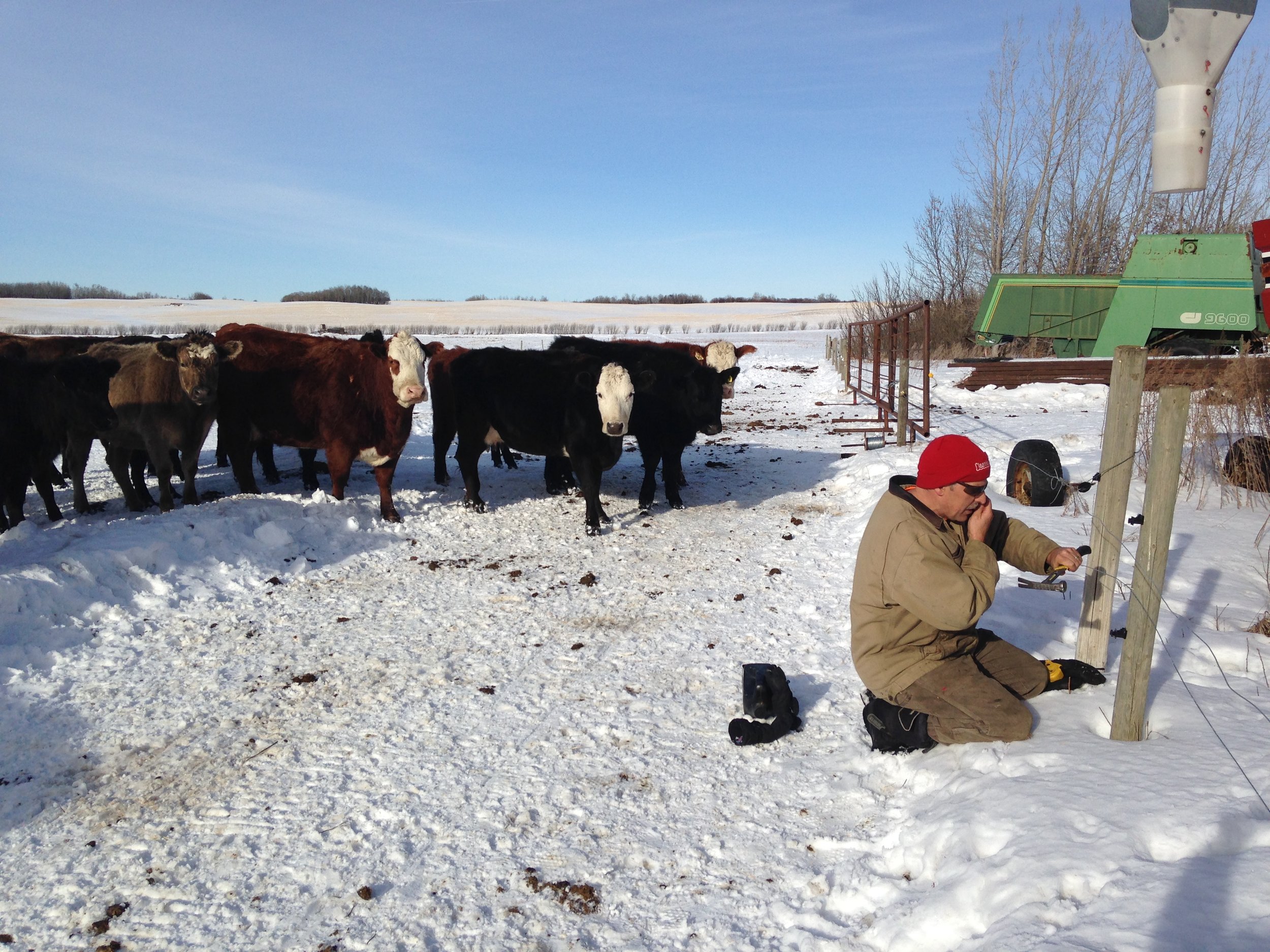Several weeks ago we had to revisit the fence situation on our farm. We've come to love our electric fence. We have found that once they learn to respect it, a well-grounded electric fence (most people don't put in enough ground rods!) keeps our cows on the correct side of our farm boundaries. We have one cow in particular, Truffles, that we couldn't keep in until we bought a good quality fencer (ours is a Gallagher M1800i). It only took one run-in with the new "hot" fence to reform our repeat offender. She got quite the shock when she slipped under the wire. It was a bit of an ordeal to convince her to go back in!
Our cows grazing a paddock this past summer.
Unlike barbed wire, this whole system doesn't depend upon physical strength and it's less of a pain to tighten, since there are fewer wires and no barbs that catch on the posts.
During the summer, our electric fence system also allows us to manage our pasture more effectively through a practice known as intensive grazing. To understand intensive grazing you need to know something about cows. Cows are just like humans, they prefer to eat certain kinds of vegetation over others. They'll wander through a field picking through the "sweet stuff," while neglecting and trampling the less delicious (but nutritious!) vegetation. Afterwards, they'll refuse to go back and eat the remaining vegetation. This is where intensive grazing and electric fence comes in!
If you don't give your cows all of the field at once, but confine them to a limited area (it's still quite large!), they will eat more of the vegetation, not just their favourites. It's kind of like being told to eat what's on your plate, instead of being presented with a buffet where you can pick out all your favourites. Since we already have permanent electric fence between our fields, we are able to put in temporary portable electric fence, using step-in posts and and a reel of wire. We simply connect this wire to our permanent fence and we instantly have a temporary electrified division in our field that the cows will respect! Once the cows have eaten an appropriate amount of the vegetation we give them a new section (these sections are called paddocks).
Electric fence presents some challenges during the winter season. In order for an animal to receive a shock, the electricity must travel through the animal's body, through the ground, and back to the ground rods, completing the circuit that started at the fencer. However, in winter the snow on the ground acts as an insulator and prevents the electricity from traveling back into the ground. As a result the animals receive little or no shock.
After a bit of frustration with our cows getting out, we finally figured out a solution. Until recently, we only had one hot wire along an important stretch of fence that kept the cows away from our bales (for winter bale grazing). The snow was allowing the cows to slip out under the wire without a shock. We had thought about a second lower wire to prevent this, but if the cows were not getting shocked this would do us no good, the cows would just push through both wires. After a little bit of research we decide that instead of adding a second hot wire, we'd add a wire connected to the ground terminals for the ground rods on our fencer. When the cows try to push against the fence the touch both the hot wire and the new ground wire, completing the circuit and eliminating our problem with the snow. (Ironically after we added the wire, the weather warmed up and the snow around the fences melted. You have to laugh at how things work out sometimes!)
After an afternoon of stretching a wire and nailing it up on the post, we finally seem to have solved our snow problem. The cows watched us suspiciously all afternoon and they haven't been out since!











